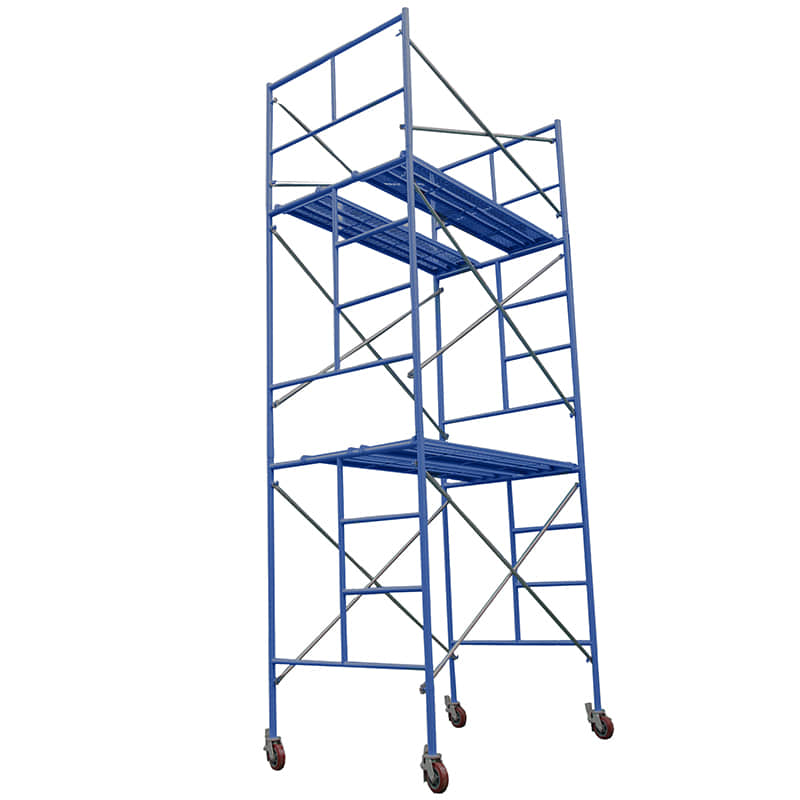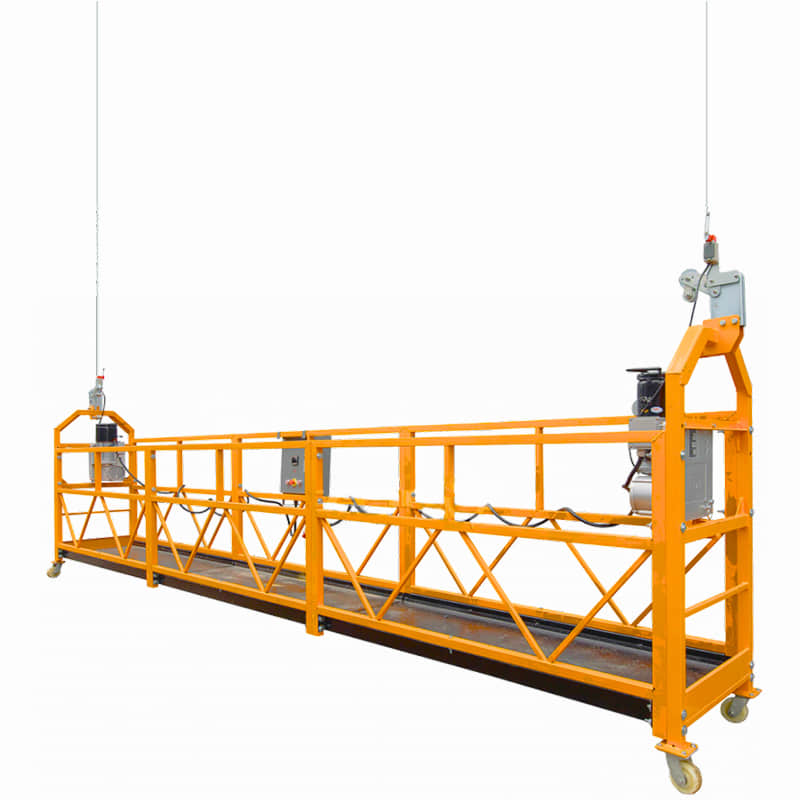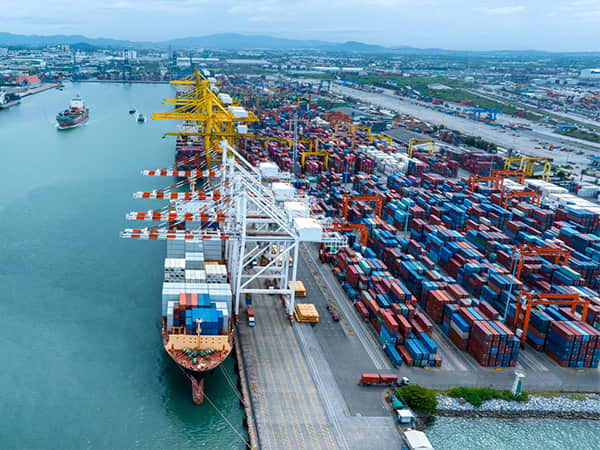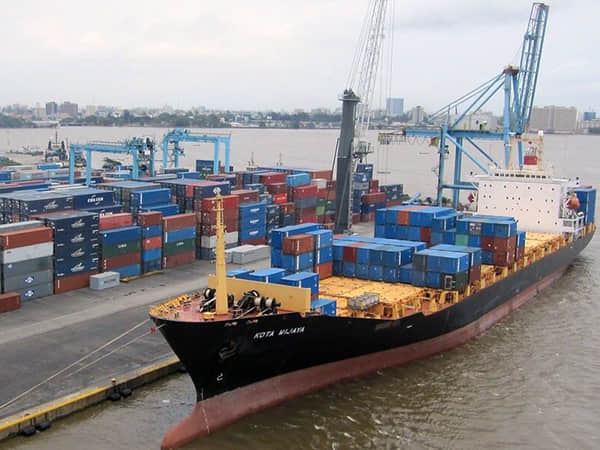Harbor Freight Scaffolding Manufacturer
Understanding Harbor Freight Scaffolding
Harbor freight scaffolding is a specialized form of scaffolding designed to support work crews and materials to aid in the construction, maintenance, and repair of port facilities. These facilities include cargo containers, cranes, docks, and warehouses.
While all scaffolding serves the basic purpose of providing a safe working platform, harbor freight scaffolding differs in several ways due to the unique demands of port operations:
- Load and environmental tolerance: Need to withstand heavier loads and be more corrosion resistant.
- Modular design: Able to be quickly installed and disassembled to meet port operation needs.
- Specialized safety measures: The high risk of ports means that more stringent safety features are required.
- Operational flexibility: Able to adapt to the transfer of cargo loading and unloading locations.
Types Of Harbor Freight Scaffolding
-

Fixed (Modular) Scaffolding
- stable, durable and strong, but cannot be moved
Applications:
Maintenance and repair of fixed port structures such as cranes and dock facilities.
(Long-term construction projects where stability is critical.)
-

Mobile Scaffold
- can be moved quickly and easily from one location to another. Has limited stability and limited carrying capacity.
Application:
Cargo loading and unloading operations that require relocation fairly often.
(Short-term maintenance work on cranes in different areas of the port.)
-

Suspension Scaffolding
- provides access to high vertical surfaces and does not take up ground space. Subject to strong winds and adverse weather conditions.
Application:
Inspection and maintenance of high-rise port structures, such as cranes and loading arms.
(Cleaning, painting or maintenance work on high or vertical faces.)
Project Of Harbor Freight Scaffolding
This section presents detailed case studies from a range of port settings to demonstrate instances of application and benefit of harbor freight scaffolding. By offering real-world data and insights, these case studies highlight the essential function of scaffolding in improving port operations.
Case 1: Port of Durban, South Africa

Project Overview:
- Location: Port of Durban, South Africa
- Project Duration: 8 months
- Scope: Maintenance and overhaul of port cranes and loading docks
Challenges:
- Exposure to harsh environmental conditions: atmospheric conditions included salt water and associated humidity which caused rapid corrosion.
- Loading requirements: Scaffolding must be able to support weight of heavy machinery and workers.
- Safety: The environment of crane structures was physically hazardous due to the height and complexity of crane structures.
Implementation:
- Material Selection: Galvanized steel scaffolding with anti-corrosive coatings were used to preserve the life of components in this corrosive environment.
- Design: Scaffolding should be load-bearing and able to withstand loading requirements.
- Safety: Safety was achieved by utilizing guard rails and toe boards and safety nets. Personnel were also protected with harnesses.
Results:
- Efficiency: This method enabled the project to be completed 20% earlier than planned.
- Safety: Thanks to the strong stability of the scaffolding, safety measures and training, there were zero reported accidents.
- Cost: The use of galvanized steel and anti-corrosion coating saved the project 15% of the cost.
Case 2: Port of Mombasa, Kenya

Project Overview:
- Location: Port of Mombasa, Kenya
- Project Duration: 6 months
- Scope: Construction of new cargo handling facilities
Challenges:
- Limited Space: Port facilities with limited space to accommodate construction activities.
- Dynamic Requirements: Require flexibility to adapt to variations in scaffold design to meet the demands of different phases of construction.
- Impact of Weather Conditions: Constant rainfall and high humidity impact construction deadlines and materials.
Implementation:
- Modular Scaffolding: Select a modular scaffolding system that could be assembled on-site and adjusted quickly to ensure modular construction where space was used effectively.
- Mobile Units: Design fully mobile scaffolding units that design to be easily moved on the construction site to allow for adapting to diverse and changing requirements.
- Weatherproof Materials: The team selected materials that were rust and corrode-resistant and had a comparably high amount of waterproofing to withstand the weather conditions.
Results:
- Operational Flexibility: When the requirements change, the scaffolding system could be adjusted as needed, with systems re-modified and reassembled within hours for different parts of the construction.
- Productivity: On-time completion of the project with a further 10 percent of production due to efficacious scaffolding solutions.
- Safety and Compliance: A safe and reliable construction environment, with daily safety checks and staff safety checks due to the construction process, with a zero safety incident record.
Case 3: Port of Lagos, Nigeria

Project Overview:
- Location: Port of Lagos, Nigeria
- Project Duration: 4 months
- Scope: Inspection and maintenance of tall port structures
Challenges:
- High-Rise Structure Access:Need to access and inspect structures up to 50 meters high.
- Varying Structural Components: Multiple construction elements which require different types and configurations of scaffolding.
- Time Constraints: Tight schedule to minimize disruption to port operations.
Implementation:
- Suspended Scaffolding: Utilized suspended scaffolding system for flexible and safe access to high above ground structures
- Scaffolding Configuration: Custom designed scaffolding for providing total coverage and access to all structural components.
- Time Management: Coordinated closely with port authorities to schedule inspections during low-traffic periods, optimizing time management.
Results:
- Accessible: All the structural members could be safely and efficiently inspected and the deficient areas could to be repaired promptly.
- Efficient: Our project was completed 15% early, which was considerable in avoiding any delay to port operations.
- Cost: The combination of scaffolding and work staging allowed for approximately 10% savings from the original budget.
Challenges And Solutions For Harbor Freight Scaffolding
Scaffolding harbor freight is essential for the efficiency and safety of port operations, but it also faces a series of challenges.
Issue 1: Harsh weather conditions
- It is recommended to use corrosion resistant materials when selecting materials, relevant to galvanized steel or aluminum materials, also recommend applying protective coatings to the required materials. In addition, pay close attention to the weather and inspect the scaffolding regularly.
Issue 2: Supporting Load and Keeping Stability
- The scaffolding should be within the scope of their load capacity, and utilize the scaffold accessories such as anchors and brackets to enhance the stability of the scaffolding system. The scaffold should be install and disassembled by professionals
Issue 3: Limited Space and Accessibility
- To conquer limited space conditions, you may have to use modular scaffolding, mobile scaffolding which possess space flexibility and suspend scaffolding to reduce the space used on the floor.
Issue 4: Worker safety
- Workers should be trained thoroughly when using scaffolding, it is important that scaffolding is provided with guardrails, safety nets, fall prevention system. The scaffold should be inspected on a regular basis.
Conclusion
By using professional safety measures and implementing modular design, custom-madeharbor freight scaffolding is safe and efficient in high-risk port environments.harbor freight scaffolding is essential because it can be easily changed according to the port's requirements, is structurally strong, and will become an important part of keeping the port running efficiently and safely. Improve efficiency, reduce danger, and ensure the safety of your personnel by investing in qualityharbor freight scaffolding.
Read More
Harbor Freight Scaffolding Review--YouTube
Harbor Freight Tools--Wikipedia
Bridge Scaffolding--AJ Building
FAQ
What are the basic types of scaffolds?
- Suspended Scaffolds/Supported Scaffolds/Aerial Lifts.
When Should Scaffolding Be Inspected?
- Scaffolding should be inspected at least once a week and immediately after severe weather.
Which should I choose, steel scaffolding or aluminum scaffolding?
- Steel scaffolding is highly stable and cheap; aluminum scaffolding is expensive but lightweight.





